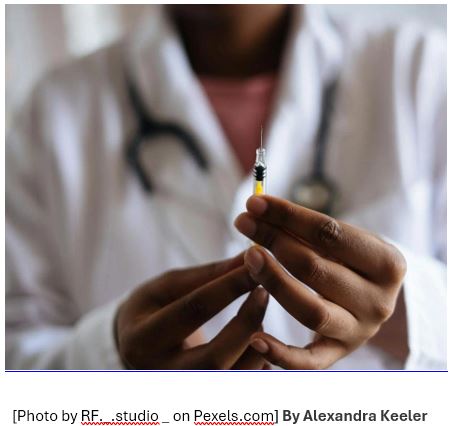Sublocade, a powerful medication to treat opioid addiction, is poised to become more accessible. But rapid access is only part of the

CAA Comment
The Canadians are leading the way in dealing with the illicit drug issue with further information about new drugs that can remove the cravings for opioids. We all recognise that the addiction extends past the cravings for a high and includes behavioural addictions like wanting to meet with like-minded people (friends?), the drug culture.
This part of the drug culture is harder to address in many ways than the addiction to the drug of choice. This is where the Police come to the fore. Police who focus on street-level interactions between addicts must be the priority and, in many ways, is more important than targeting the Mr Bigs in the industry. Targeting street-level addicts will firstly disperse them and then make it harder for them to access the drugs they crave, leading to more addicts seeking a medical escape from their addiction and putting muffled pressure on the dealers, making their trade more difficult to function.
The added bonus of reduced public exposure of addicts will reduce the likelihood of others, not addicted, particularly children, being exposed and therefore attracted to the drug scene.
This will also impact the crime related to servicing addictions, an aspect of the drug culture conveniently overlooked by the pro-drug lobby.
We are, however, very slowly, on an international scale, moving towards effective management of this hideous affliction that ruins otherwise good lives and impacts dramatically and adversely on national economies.
It may well be the financial impact that hastens this.
We will see in time the concept of direct and involuntary intervention in drug management become an accepted norm with the advances in medication, that time is fast approaching.
A powerful medication to treat fentanyl addiction is poised to become more accessible in Canada.
Sublocade is a long-acting medication that prevents fentanyl users from experiencing a high from fentanyl, thereby reducing cravings for the drug. It also offers robust protection from an opioid overdose.
On Feb. 24, the U.S. Food and Drug Administration approved new guidelines for how the medication can be administered, enabling U.S. health-care providers to prescribe Sublocade to patients with opioid use disorder after just one hour of observing them. Previously, patients needed to participate in a week-long observation period.
Experts say they expect Canada to follow suit, as Sublocade is already being used off-label in Canada to treat fentanyl addiction.
“To get [patients] started on Sublocade, all in one day, right now that’s all off-label,” said Dr. Janel Gracey, an addictions medicine doctor in London, Ont.
The new guidelines from the U.S. Food and Drug Administration will enable U.S. health-care providers to prescribe Sublocade to patients with opioid use disorder after just one hour of observing them. Previously, patients needed to participate in a week-long observation period.
Gracey says this shift could save lives.
“You have to get them on the medication right away, because it’s going to save their life and they probably won’t come back tomorrow,” she said.
‘Rock bottom’
Health-care professionals administer Sublocade to patients by injection, once every four weeks. It costs about $600 a month, but is generally covered by employer or public drug plans.
A similar drug, Suboxone, is available as an oral medication. Suboxone reduces cravings for fentanyl and mitigates withdrawal symptoms. But unlike Sublocade, it does not fully block the high from using fentanyl and offers less robust protection against an overdose.
A 2023 study found patients who received long-acting buprenorphine — the key ingredient in Sublocade — experienced significantly fewer nonfatal overdoses than those on daily treatments such as Suboxone. The study focused on nonfatal overdoses, as buprenorphine largely eliminates the risk of fatal overdoses.
Sublocade patients usually start on Suboxone pills and then switch to monthly injections after seven days. The U.S.’s new guidelines permit patients to start directly on Sublocade.
Currently, most patients switch to using Sublocade in hospitals, when they reach a crisis point from long-term opioid use. Their sustained fentanyl use may lead to serious health complications, such as heart infections, skin abscesses or spinal infections that leave them hunched over at a 90-degree angle.
“That is a pretty big rock bottom,” said Dr. Ken Lee, a doctor at an addiction medicine clinic in London, Ont.. “People go home [from the hospital and realize] this is really doing me damage. I have to stop doing this.”
In 2021, two doctors in the northeastern Ontario city of Timmins launched a hospital program that offers patients access to Sublocade within 24 to 48 hours of being admitted for an overdose.
Since being introduced, the city’s overdose death rate has fallen by nearly 30 per cent. And more than 70 per cent of the patients who switch to Sublocade in the hospital continue receiving it after being discharged.
Lee says the switch to Sublocade in a hospital offers patients something like a “trial month” to reflect on their life choices.
Gracey, the London-based doctor, says fentanyl cravings can diminish naturally as patients receive Sublocade. “Over time, your brain just won’t want it, because it will say, ‘Well, this is stupid, I’m wasting my money and my time,’” she said.
“[But] some of them aren’t ready for that. So in those cases, we just put them on Suboxone, and then eventually, hopefully convince them to come over to doing the shot.”
Slow uptake
Doctors generally encourage patients to stay on Sublocade long term, to prevent relapse.
Gracey believes one reason for the slow uptake of Sublocade is the lack of financial incentives for health-care professionals to provide monthly injections rather than daily dose drugs, which require more frequent visits to a pharmacy or addiction clinic.
“When Sublocade first came out, a lot of methadone doctors didn’t want to even go there,” she said. “Instead of the patient coming every week … they’re coming monthly, or even less than that, so your income just dropped down by three quarters.”
She hopes the government will change how physicians and pharmacists are compensated for addiction treatment.
“It should be a monthly amount regardless of what medication the patient is on,” said Gracey.
“Income is totally what’s gearing what you choose to put a patient on and that shouldn’t be the way.”
The full treatment
While Sublocade is effective, medication is “just a small piece of the pie,” says Gracey. Patients need to receive mental health support as well.
Gracey’s two addiction treatment clinics offer in-house counselors, mental health support and social workers. The demand for these services has grown, she says, with waitlists for counseling extending to about two months.
Lee, by contrast, says only 20 per cent of his patients take advantage of the free counselling available through his clinic. He attributes the low uptake to the difficulty of confronting trauma.
The medication’s long-acting nature also means drug users do not need to regularly visit clinics, safe injection sites or safer supply programs.
For some patients, it can be difficult to lose the social support that comes from regularly visiting clinics or safer supply programs.
“I’ve had one or two patients that actually destabilized once I put them on Sublocade because they needed that weekly visit,” Gracey said. “They kind of went off the rails with their other addictions.”
Lee says the sense of community found at safe injection sites can be significant, because “you want to go where your friends are.”
But he is not convinced that this peer community is beneficial. “It’s like hanging out with the wrong gang at school,” he said.


Excellent article & highly informative re the “psych” of the medical profession preferring more frequent treatments to line their pockets- I bet this applies to non addictive treatments as well 🤫😗
Excellent article & highly informative re the “psych” of the medical profession preferring more frequent treatments to line their pockets- I bet this applies to non addictive treatments as well 🤫😗